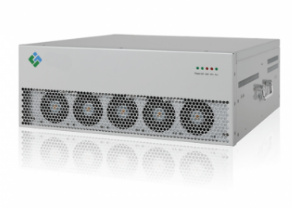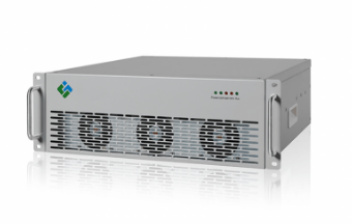
Think of our power grid like a giant Jenga tower. As we add more wind turbines and solar panels (the green blocks), the tower becomes wobblier. This happens because sunshine and wind change like mood swings. One minute your solar panels are pumping out power during a cloudless noon, the next they’re napping when a storm rolls in.
This makes the entire electricity system feel like a weak Wi-Fi connection. Lights flicker, factory machines pause, and your PlayStation might crash during a game.
For example, wind turbines stop when the wind slows down, and solar panels stop at night. Devices associated with these sources, such as solar system inverters, may produce inconsistent electricity.
This is like a bumpy road for the power flow. These differences can cause problems for the grid. They make it harder to keep the lights on for everyone.
This difference causes voltage and current to fluctuate—sometimes they spike, sometimes they dip. These ups and downs can affect how well the grid works. This can cause sudden power drops, damage to equipment, or even small outages.
The main concern is making sure the grid can handle these changes smoothly. We need safe and consistent electricity, especially as we use more renewable energy.
Think of our power grid as a giant dance party. When green energy joins in (like wind turbines doing breakdances and solar panels popping moonwalks), the rhythm gets messy because they don't move to the same beat. That's where two special "party coordinators" step in:
SVG works like a DJ for electricity. When wind turbines stop working due to no wind, SVG quickly provides backup power. This keeps the lights from flickering. It’s like when your phone flashlight stays on, even if someone unplugs the speakers.
APF acts as the noise-canceling crew. It tracks down loud feedback, like the noise from solar panels or buzzing from charging EVs. This feedback can make sensitive devices, like your grandma's oxygen machine or a lab's microscopes, malfunction.
Though both use similar tech guts, one keeps the party's energy flowing while the other silences the audio glitches. You wouldn't use earplugs to fix a blackout, right? That's why factories need both – to keep machines humming smoothly while blocking those invisible "soundwaves" that fry electronics.
The many technical terms in this field can overwhelm non-specialists. They may feel confused by acronyms and complex language. However, clarifying the differences between SVG and APF is key to navigating this landscape.
Imagine your neighborhood's electrical grid works like a community water system. SVG and APF are like two specialized maintenance crews keeping everything flowing smoothly, but solving completely different problems.
On a hot day, when every AC in the neighborhood turns on, the SVG helps fix the grid. It’s like the person who opens a fire hydrant to balance water pressure. This stops your bedroom lights from dimming when the fridge turns on.
Those factory machines down the street? They keep chugging like a viral dance challenge instead of spazzing like a buffering livestream.
The APF? It's the grid's trash collector. It chases down gremlins in the wires – that fuzzy static from your PS5's power cord, or the angry-bee buzz from your microwave. Imagine a solar farm pumping juice through the grid as clouds play peek-a-boo with the sun.
The SVG keeps the power flow smooth, like a good Spotify playlist. The APF stops sneaky zaps that could damage hospital X-ray machines.
1. Different Functions: Addressing Distinct Issues
Focused on addressing reactive power discrepancies, serving as the grid's power factor controller. When the grid has many inductive devices, like motors or transformers, these devices take in reactive power. This is like a leaky bucket. As a result, generators work less efficiently, which raises energy costs.
SVG rapidly fixes this leakage:
* In inductive-dominant scenarios (e.g., heavy motor use), it injects capacitive reactive power to balance deficits.
*In capacitive-overload situations (e.g., excessive capacitor compensation), it absorbs excess capacitive power, effectively providing inductive support.
This ensures continuous reactive power equilibrium, boosting generator efficiency and minimizing transmission losses.
Focused on eliminating harmonic pollution, serving as the grid’s current purifier.
Non-linear loads like inverters, rectifiers, or computers generate harmonics—distortions akin to impurities in water—which deform current waveforms, damaging equipment and interfering with signals.
APF filters out these impurities by:
· Real-time detection of harmonic currents.
· Generating counteracting harmonic currents with opposite phase, canceling distortions and restoring clean sinusoidal waveforms.
This protects equipment longevity and prevents grid faults caused by polluted currents.
2. Targeted Problems: Reactive Power vs. Harmonic Currents
· SVG manages reactive power—the “invisible energy” essential for magnetic devices—tackling low power factor and voltage fluctuations.
· APF targets harmonic currents—the “impure signals” in electrical flow—addressing waveform distortion and harmonic 超标 (excessive harmonic levels).
3. Operational Principles: Energy Balancing vs. Distortion Cancellation
Utilizes power electronics (similar to intelligent switches) to actively inject or absorb reactive power, dynamically adjusting grid balance.
Analogy: A tunable “reactive reservoir” that releases capacitive energy when inductive loads demand it and absorbs excess capacitive energy when systems are overcompensated.
Identifies harmonic components in load currents and generates equal-magnitude, opposite-phase currents to neutralize them.
Analogy: A “reverse impurity generator” that counteracts specific harmonics (e.g., 5th, 7th orders) by creating mirrored signals, eliminating distortions and leaving only fundamental-frequency current.
4. Typical Applications: When to Use Which?
· Factories with high inductive loads (motors, welding machines) suffering low power factor (e.g., <0.9) or incurring reactive power penalties.
· Grids experiencing voltage fluctuations (e.g., lights dimming when air conditioners start), requiring stable voltage support.
· Industrial facilities with non-linear loads (such as inverters, induction furnaces, and rectifiers) experiencing unusually high energy usage or regular equipment malfunctions.
· Critical settings like hospitals and data centers, where harmonic disturbances might affect delicate equipment.
A Concise Summary
· SVG: Enhances reactive power distribution to reduce inefficiencies, conserve energy, and maintain voltage stability.
· APF: Cleanses current wave forms to prevent harmonic problems, protecting devices and enhancing dependability..


Synergy in Action:
Often, these systems are combined, like in AHF/SVG cabinets. Non-linear loads, which APFs target, usually cause reactive power problems. This is where SVGs come in. Their combined action ensures holistic power quality improvement, addressing both pollution and inefficiency.
SVG specializes in resolving reactive power imbalance, acting as a "power factor regulator." In grids with heavy inductive loads, like motors or transformers, reactive power is important. It helps create magnetic fields but does not produce energy. This reactive power leaks, making generators work less efficiently and raising costs.
APF, conversely, tackles harmonic pollution, serving as a "current purifier." Non-linear devices such as inverters and computers distort current wave forms with harmonic "impurities," damaging equipment and causing signal interference.
For more professional information, please make a detailed understanding of the site:www.ytelect.com
Seven. Ni
Subscribe to us to enjoy event prices and get some of the best prices.
 IPv6 network supported
IPv6 network supported

